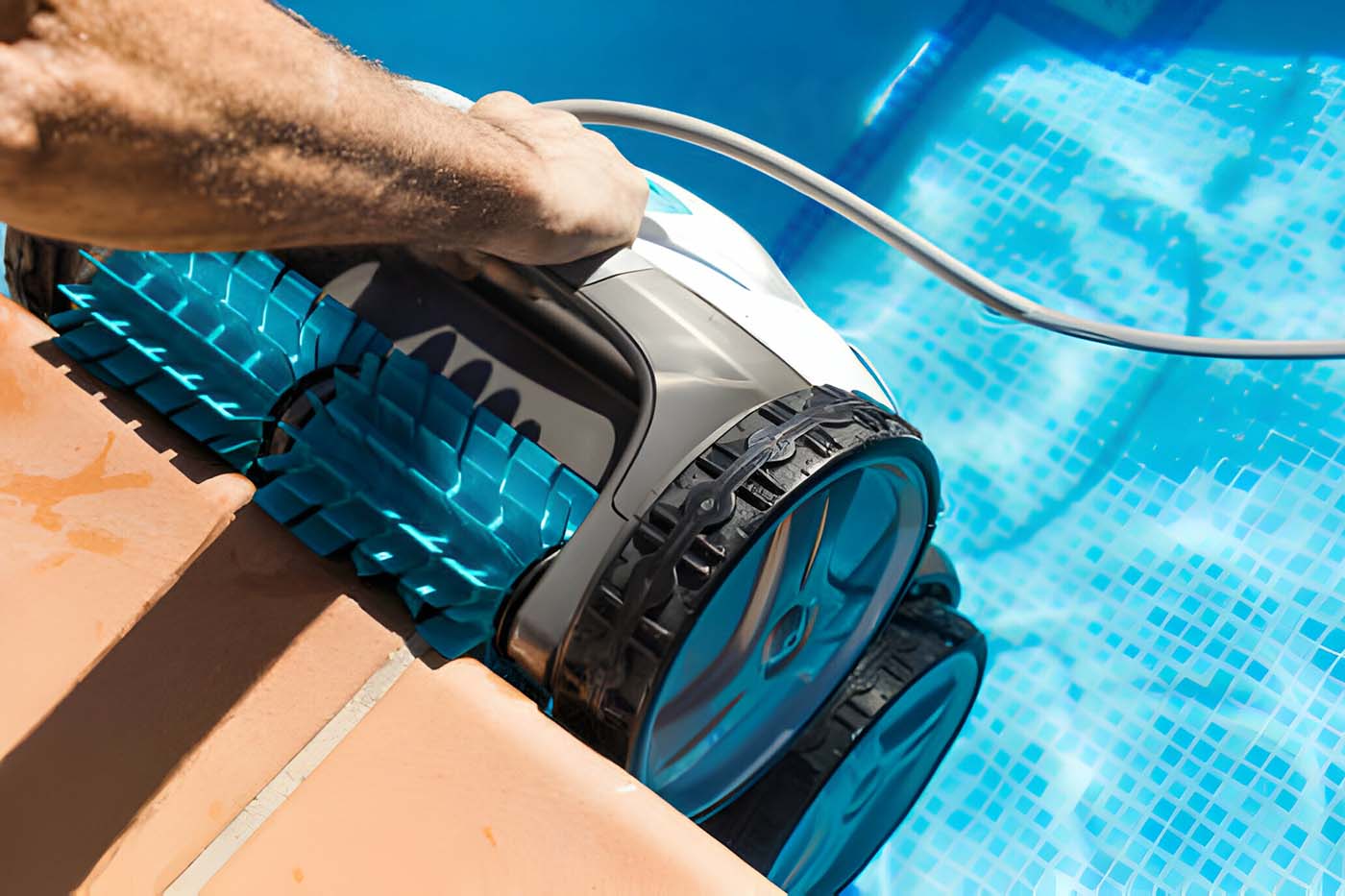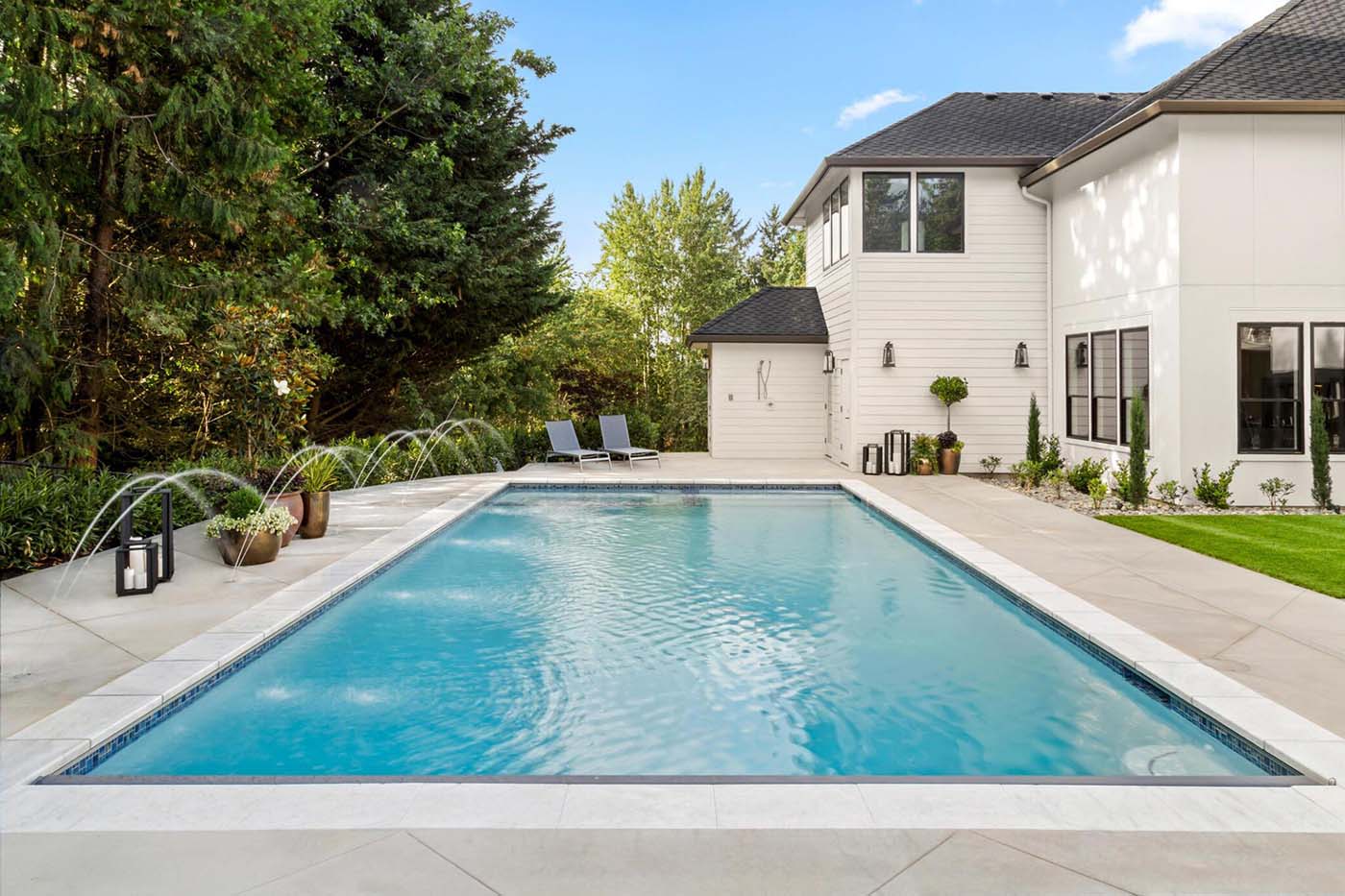The warm weather is upon us and nothing screams summer more than a refreshing dip in your very own pool. But as a new swimming pool owner, it can seem overwhelming to keep it clean and maintained. You may be wondering where to even begin with the endless list of tasks involved with pool maintenance.
From simple maintenance tips to troubleshooting common problems, we will walk you through everything you need to know for a stress-free and enjoyable pool ownership experience. Grab your sunscreen and let’s dive into the world of pool care!

Regular Cleaning
Regular cleaning of your swimming pool is absolutely essential for its proper functioning and longevity. Skimming the surface regularly will keep debris from building up while vacuuming the bottom ensures that any dirt and grime don’t accumulate. Brushing the walls of your pool is necessary to remove any algae that may have formed on the surface.
You might even want to invest in professional pool cleaner robotic equipment to make the cleaning process even easier. That aside, keeping your pool clean is a simple yet effective way to avoid any costly repairs in the future.
Chemical Balance
A crucial aspect of pool maintenance is maintaining the correct chemical balance in your pool water. Ensuring that the pH, chlorine, alkalinity, and calcium hardness are within the recommended levels prevents the growth of algae and bacteria, and avoids issues such as skin irritation and cloudy water.
The pH level should ideally be between 7.4 and 7.6, while the recommended chlorine level is between 1-3 parts per million (ppm). Alkalinity aims to stabilise the pH levels and should be kept between 80-120 ppm while calcium hardness levels should be maintained at around 200-400 ppm. To accurately measure these levels, invest in a reliable pool water testing kit and follow the manufacturer’s instructions for the best results.
Filter Maintenance
The pool filter is responsible for removing impurities and contaminants from the water, making it an essential component of your pool’s health. Regularly checking and cleaning the filter ensures that it can continue to do its job effectively.
Depending on the type of filter you have, maintenance procedures may vary. For example, a cartridge filter should be cleaned every 4-6 weeks, whereas a sand filter should be back-washed and rinsed every 2-3 weeks. Consult your pool’s manual or seek professional advice on the appropriate maintenance schedule for your specific filter.
Seasonal Prep Matters
As the warmer weather approaches and the days get longer, it’s now time to properly prepare your pool for use. Opening a pool at the start of the season isn’t just about removing the cover and filling it up with water. There are specific steps that should be taken to ensure your pool is safe and ready to use, including:
– Removing any debris and cleaning the pool thoroughly before filling it up
– Checking all equipment for damage or wear and tear, and replacing as needed
– Testing the water chemistry to ensure balance is maintained after being closed for several months
– Running the pool pump and filter for 24 hours to circulate the water and remove any impurities before swimming.
Similarly, closing your pool at the end of the season also requires specific steps to prevent damage during the colder months. Again, it’s best to consult a professional for guidance on this process.

Troubleshooting Common Issues
Despite our best efforts, sometimes things can still go wrong with our pools. Here are some common issues and quick fixes you can do yourself:
Cloudy Water
Cloudy water can be caused by a variety of factors, including high levels of contaminants, poor circulation, or an unbalanced chemical composition. To fix this issue, shock your pool with a chlorine treatment to kill bacteria and algae and run the filter constantly until it clears up.
Algae Growth
Green algae are common in pools and can quickly spread if left untreated. To eradicate it, brush and vacuum the affected areas, then shock the pool with an algaecide treatment. If you’re dealing with black or mustard algae, seek professional help as they require different treatments.
Filter Issues
One of the most common filter issues pool owners face is clogging due to accumulated debris and dirt. In these cases, clean or replace the filter cartridge or backwash and rinse the sand in a sand filter.
Leaks
If you notice your pool water levels dropping significantly, you may have a leak. Check for any visible cracks or damage to the pool’s structure and consult a professional if necessary. In some cases, leaks can also occur in the pipes or pump, so it’s essential to identify the source of the leak before attempting any repairs.
Safety Precautions
Keeping your pool in top shape also means ensuring the safety of everyone who uses it. You should always have lifesaving equipment such as life rings or life jackets nearby and easily accessible. Secure your pool area with fencing and self-closing, self-latching gates to prevent unsupervised access, especially by children and pets. Regularly inspect the pool area for slip hazards and address them promptly.
Don’t forget to enforce rules like no running, no diving in shallow areas, and no swimming alone. Educating your family and guests on basic pool safety, as well as emergency procedures, is a must in preventing accidents. Know, however, that combining vigilance with proactive safety measures creates a secure environment for everyone to enjoy the pool safely throughout the summer.
Conservation Efforts
Aside from keeping your pool well-maintained, you must also be mindful of conserving water and energy. Here are some simple ways you can do your part for the environment:
– Use a pool cover when the pool is not in use to prevent evaporation and keep the water warm.
– Limit the amount of backwashing you do as this wastes significant amounts of water.
– Upgrade to energy-efficient pool equipment, such as pumps and heaters, to save on electricity.
– Regularly check for leaks and fix them immediately to avoid unnecessary water loss.
By following these conservation efforts, not only are you being environmentally conscious, but you’re also reducing your pool’s maintenance costs in the long run.
Maintaining a pool may initially seem daunting to new owners, but with the right information and commitment, it can easily become a part of your routine. With these simple strategies in mind, you’ll ensure your pool remains a source of joy and relaxation all summer long. The key to a hassle-free pool experience lies in consistent care and prompt attention to any problems. Enjoy the refreshing waters, and here’s to countless sunny days ahead in your perfectly maintained pool!








